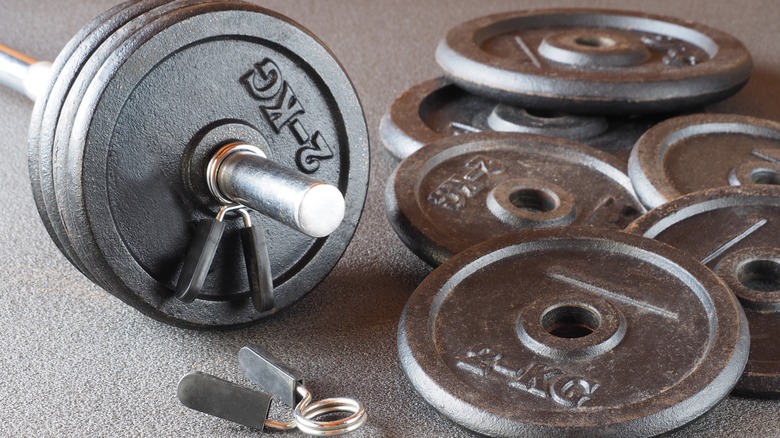What Does It Mean When You Get Joint Pain From Lifting Weights?
Lifting weights can make you feel great physically and mentally. You sometimes look forward to that post-gym soreness because you know it means you're getting stronger. Sometimes, though, that soreness can be a bad thing, especially if it's in your joints.
Weight training can sometimes end with a trip to the emergency room. From 1978 to 1998, injuries from weight training increased by 35%, according to a 2000 study in Physician and Sportsmedicine. A 2018 study in the Journal of Long-Term Effects of Medicine Implants found that weight-lifting injuries continued to increase by 25% from 2010 to 2016. These injuries often include fractures, herniated disks in the spine, and knee strains. They are more likely to occur while using free weights rather than machines (per a 1993 study in Sports Medicine).
Competitive athletes aren't necessarily spared from injuries, particularly when weights are central to their sport. A 2017 review in the British Journal of Sports Medicine found that Olympic weightlifters and powerlifters had injuries to the spine, shoulder, and knee. Strongman competitions and Highland Games, where athletes might perform truck pulls or log tosses, tend to result in the most injuries, according to a 2017 review in Sports Medicine. The most common were joint-related sprains and tendinitis. However, bodybuilding had the lowest incidences of injuries.
Does weightlifting cause joint pain?
If you experience joint pain while weightlifting, check your form. According to Excellence in Fitness, most strength-training joint pain comes from poor technique or lifting too much weight. You might not feel this joint strain after one session, but over time, the stress on your joints could be significant.
Subtle changes to your form can make a big improvement, according to a 2001 article in the Strength and Conditioning Journal. For example, if your grip on the bench press is wider than 1.5 times the width of your shoulders, you could be taxing your shoulders. Lateral raises with dumbbells can pinch your shoulders, so try this exercise with your thumbs pointed toward the ceiling.
Strength training can actually ease joint pain because stronger muscles allow your joints to move correctly (per Excellence in Fitness). Resistance training can reduce sports-related injuries because it corrects strength imbalances, according to a 2012 study in Sports Medicine. A 2017 article in the Journal of Sports Science and Medicine found that older adults aged 60-83 who participated in a full-body strength training program for eight weeks reported less pain than a control group. According to the Arthritis Foundation, strength training at least twice a week for 20-30 minutes can help manage symptoms of arthritis.


